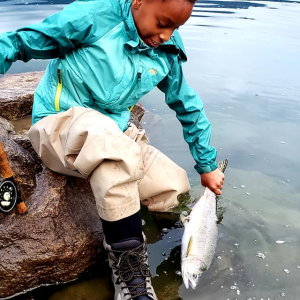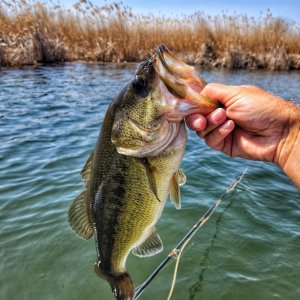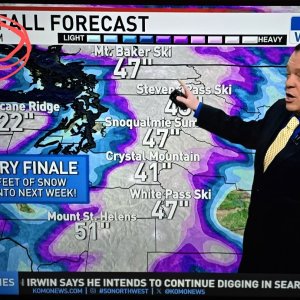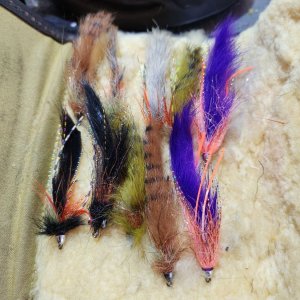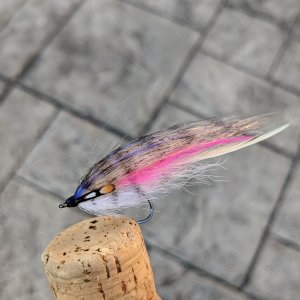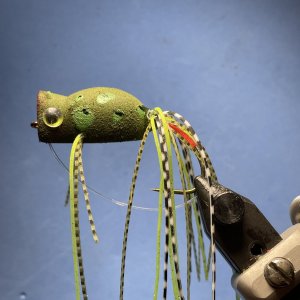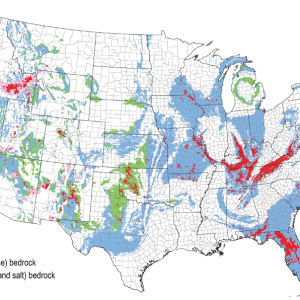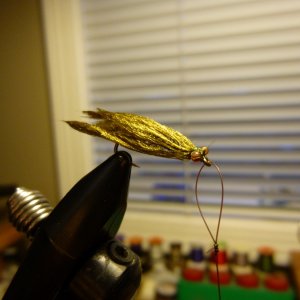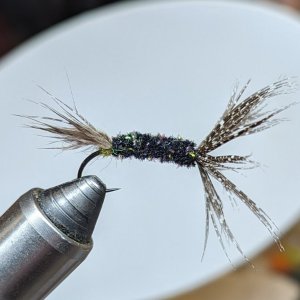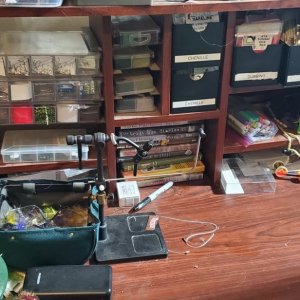The SA Amplitude Smooth Trout lines are pretty much spot on to the AFTM grain weight specs, and my absolute favorite dry lines for trout.After burning through a few Rio dry lines, I decided to explore other options. Having had good experiences with their spey heads, I tied a Airflo dry line. It was horrible. Weird kinking that would never straight out, low floating, and a texture that was somehow annoying to handle.
Regardless, no more Rio dry lines. They just don't last. I wish someone could get the message to SA that their lines don't all need to be two weights heavier.
You are using an out of date browser. It may not display this or other websites correctly.
You should upgrade or use an alternative browser.
You should upgrade or use an alternative browser.
Rio fly line
- Thread starter Buzzy
- Start date
Any PVC line, be it Rio/SA/Orvis/Cortland, has a limited shelf life. The less heat and sunlight it gets, the longer it will last, but it will eventually get brittle and be liable to crack.
I consider most PVC lines to be "higher performance" than airflo lines, but at $100 bucks a pop these days, I'd rather have a line that floats a little lower but lasts for years.
I consider most PVC lines to be "higher performance" than airflo lines, but at $100 bucks a pop these days, I'd rather have a line that floats a little lower but lasts for years.
tkww
Steelhead
Thanks, I'll keep that in mind. Re: weighting, I realize now I was referring to their sinking lines (which is what I've been shoping for recently).The SA Amplitude Smooth Trout lines are pretty much spot on to the AFTM grain weight specs, and my absolute favorite dry lines for trout.
I might be an outlier, but I doubt it because SA lines and Airflo hold up much better.Surprised Far Bank, owners of Sage and Redington ---> quality products, hasn't improved RIO products.
My RIO lines saw 20+ sessions a month, often in the cold. I don’t spend nearly the hours flogging the water that the true salty dogs on this forum do, but I’d wager many of their customers don’t use their lines that many days in a season.
I, too, love my 40+ intermediate beach line. I've had it forever and it's seen many a beach...perhaps too closely.At one point it was the case, and I think it's still true, that Airflo uses a different plastic than RIO or SA(/Orvis). Their lines aren’t always the thinnest, but they sure seem more durable. My one remaining Airflo 40+ line has a few hundred beach sessions on it and when I looked at it this morning its still going strong—which is a good thing because I can’t find 40+ anywhere.
Just yesterday I gave it a double haul and launched that shooting head a good 90ft from the kayak! Unfortunately that was because it only took about 5 ft of the running line along for the ride. I did make an unusually high-pitched yelp as it rocketed across a Hood Canal bay
I managed to catch up to and recover it - the very clean slice makes me think it had a close encounter with an oyster.
Now I have to look up splicing running line...
Oysters!I, too, love my 40+ intermediate beach line. I've had it forever and it's seen many a beach...perhaps too closely.
Just yesterday I gave it a double haul and launched that shooting head a good 90ft from the kayak! Unfortunately that was because it only took about 5 ft of the running line along for the ride. I did make an unusually high-pitched yelp as it rocketed across a Hood Canal bay
I managed to catch up to and recover it - the very clean slice makes me think it had a close encounter with an oyster.
Now I have to look up splicing running line...
I’ve used a lot of rio dry fly lines in freshwater over the years without issues so there could be some truth to the theory that how we fish the beaches here in PS plays a role in the diminished life span of the lines we use. There is definitely opportunity for our lines to get nicked by barnacles or get stepped on while laying across barnacle encrusted rocks and oyster shells. Also, when we coho fish we are making the same exact cast hundreds of times a session for multiple months. Throw it as far as you can. I’ve noticed cracks forming on a couple of my lines in specific places like where I hold my line for the final two hauls before casting. That is a lot of pressure on that part of the line, especially with the heavy headed line like an OBS. It also might help might explain why my RIO SRC lines tend to hold up better than my coho lines.
It doesn’t explain why other lines are not failing as frequently though. In the end, it’s likely a combination of the line design and materials used, the environment we’re fishing in and how we fish these lines all playing a part. Since all lines face the same PS conditions and fishing methodology, I still think it is on RIO to revisit their line design and materials to see if there is a solution to the problem. I doubt they’ll put much thought into it if it’s an issue mostly seen by beach guys though. Such a small population compared to river and lake fisherman.
It doesn’t explain why other lines are not failing as frequently though. In the end, it’s likely a combination of the line design and materials used, the environment we’re fishing in and how we fish these lines all playing a part. Since all lines face the same PS conditions and fishing methodology, I still think it is on RIO to revisit their line design and materials to see if there is a solution to the problem. I doubt they’ll put much thought into it if it’s an issue mostly seen by beach guys though. Such a small population compared to river and lake fisherman.

